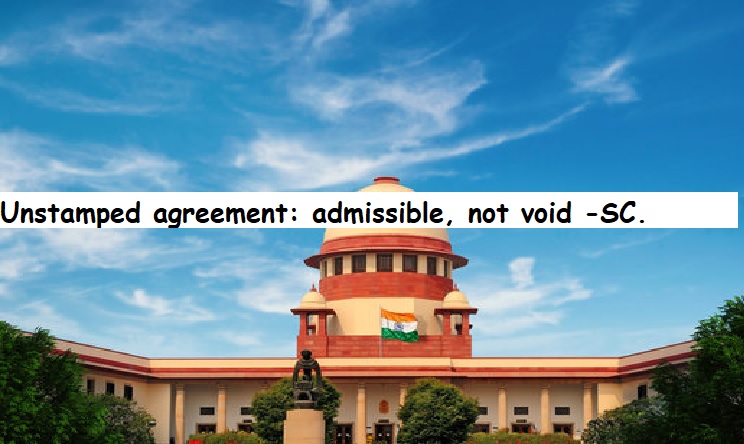


On December 13, the Supreme Court delivered a landmark ruling that significantly impacts the enforceability of arbitration clauses within unstamped or inadequately stamped agreements. This decision marked a departure from a previous judgment by a 5-judge bench in April of the same year in the case of M/s. N.N. Global Mercantile Pvt. Ltd. v. M/s. Indo Unique Flame Ltd. And Ors. The earlier ruling, with a 3:2 majority, had asserted that arbitration agreements lacking proper stamping were not enforceable.
The bench, comprising Chief Justice of India DY Chandrachud, Justice Sanjay Kishan Kaul, Justice Sanjiv Khanna, Justice B R Gavai, Justice Surya Kant, Justice JB Pardiwala, and Justice Manoj Misra, articulated a crucial distinction. It held that the inadequacy of stamping does not render the agreement void or unenforceable but renders it inadmissible as evidence.
The court elucidated the difference between the admissibility of a document in evidence and its validity or enforceability in law. The judgment clarified that an agreement could be void and unenforceable while still being admissible in evidence. The court emphasized that the admissibility of a document or oral testimony is distinct from its validity as a void agreement, indicating that a document could be void yet admissible.
Referring to Section 2(g) of the Contract Act, the judgment highlighted that an agreement not enforceable by law is termed void. Consequently, an agreement can be valid but inadmissible in evidence. This distinction underscored the essence of the difference between voidness and admissibility.
The judgment delved into the nature of Section 35 of the Stamp Act, shedding light on the legal implications of stamp duty on instruments. Notably, the section explicitly states that "No instrument chargeable with duty shall be admitted in evidence," underscoring the pivotal concept of admissibility in legal proceedings. The term "admitted in evidence" became central to understanding the impact of stamp duty on instruments, indicating whether an instrument can be presented and considered in a court of law.
Further clarification came from Sub-section (2) of Section 42, emphasizing that an instrument with duly paid stamp duty and endorsed accordingly will be deemed "admissible in evidence." The court asserted that non-payment or inadequate payment of stamp duty does not invalidate the instrument but renders it inadmissible. This nuanced distinction was crucial, as the ruling underscored that the Stamp Act does not declare instruments without proper stamping as void.
The judgment categorically labeled the non-payment of stamp duty as a curable defect, noting that the Stamp Act itself provides a structured procedure for rectifying this defect. Section 2(j) was clarified not to be applicable when an instrument is rendered inadmissible under Section 35 of the Stamp Act. The court emphasized that the effect of the latter is not to render an unstamped agreement unenforceable, as doing so would imply that it was void.
In essence, the Supreme Court's ruling clarified the nuanced relationship between stamp duty, admissibility, and enforceability, providing legal clarity on the treatment of unstamped or inadequately stamped agreements in the context of arbitration clauses. This decision significantly impacts the interpretation and application of relevant sections of the Contract Act and the Stamp Act, establishing a precedent for future cases involving similar issues.
TAGS: Section 2(g) of the Contract Act Section 2(j) Curable defect Legal implications Precedent